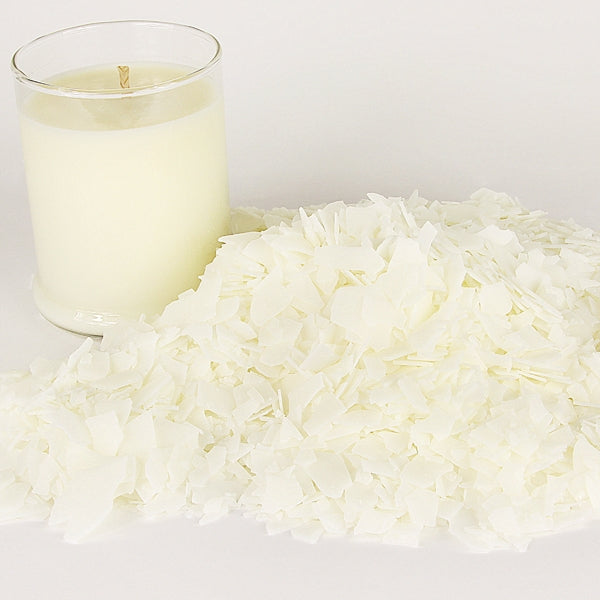Create Atmosphere with Handmade Soy Wax Candles and Home Fragrance
Create Atmosphere with Handmade Soy Wax Candles and Home Fragrance
Blog Article
From Wick to Wax: Recognizing the Chemistry Behind Soy Wax Candles and Their Environmental Impact
As we illuminate our areas with the warm radiance of candles, there lies a realm of elaborate chemistry behind the seemingly straightforward act of lighting a soy wax candle light. The selection between soy and paraffin wax prolongs past mere appearances, diving right into the realm of environmental influence and the extremely composition of the products. Understanding the molecular framework of soy wax and its combustion procedure clarifies the discharges released into our environments. Join us as we unravel the scientific details behind soy wax candle lights and explore their implications on our setting.
Soy Wax Vs. Paraffin Wax
When comparing soy wax and paraffin wax for candle light production, it is crucial to recognize the unique qualities and benefits of each material. Soy wax is a natural, renewable resource originated from soybean oil, making it environmentally friendly and eco-friendly - home fragrance. On the other hand, paraffin wax is a result of oil refining, which elevates concerns about its ecological effect and sustainability
Soy wax candle lights shed cleaner and produce much less residue compared to paraffin wax candles, making them a healthier selection for interior air quality. In addition, soy wax has a reduced melting factor, allowing for a longer-lasting candle that distributes fragrance better. Paraffin wax, on the various other hand, often tends to burn faster and less cleanly, possibly launching dangerous chemicals right into the air.
From a sustainability viewpoint, soy wax is favored for its biodegradability and eco-friendly sourcing, straightening with the expanding consumer preference for ecologically aware items. While paraffin wax has actually been a traditional selection in candle light making due to its cost and simplicity of usage, the change towards green alternatives like soy wax is getting momentum in the sector.
Chemical Composition of Soy Wax

Combustion Refine in Soy Candles
The chemical structure of soy wax directly affects the combustion procedure in soy candles, impacting variables such as burn time, aroma launch, and environmental effect. When a soy candle light is lit, the warmth from the fire thaws the wax near the wick. This fluid wax is then prepared the wick due to capillary activity. As the fluid wax gets to the flame, it vaporizes and undergoes burning. The burning process includes the vaporized hydrocarbons in the wax responding with oxygen in the air to generate heat, light, water vapor, and carbon dioxide.
The combustion efficiency of soy candle lights is affected by the pureness of the soy wax and the top quality of the wick. A clean-burning soy candle with a properly sized wick will certainly generate a constant fire and minimize residue development. This not just expands the burn time of the candle however likewise boosts the launch of scents. Additionally, soy wax candle lights have a lower environmental influence compared to paraffin candle lights due to their biodegradable and sustainable nature.

Environmental Advantages of Soy Wax

Taken into consideration a lasting alternative to traditional paraffin wax, soy wax offers notable ecological advantages that make it a popular selection amongst eco-conscious consumers. Soy wax burns cleaner and produces much less soot than paraffin wax, contributing to much better interior air top quality and reducing the requirement for cleaning and maintenance. Generally, the ecological advantages of soy wax straighten with the growing need for sustainable and green items in the market.
Recycling and Disposal Factors To Consider
Reusing and correct disposal of soy wax candle lights play an important function in maintaining ecological sustainability and reducing waste in households and communities. When it comes to recycling soy wax candle lights, the very first action is to make certain that the candle has actually melted entirely.

In terms of disposal, if recycling is not an option, soy wax candle lights are eco-friendly and can be securely disposed of in most house waste systems. Nonetheless, it is constantly recommended to get in touch with local reusing facilities or waste management solutions for details standards on candle disposal to ensure proper handling and environmental management.
Conclusion
Finally, the chemistry behind soy wax candle lights exposes their environmental advantages over paraffin wax candle lights. Soy wax, originated from soybean oil, burns cleaner and produces much less residue when compared to paraffin wax. The burning process in soy candle lights is a lot more effective, leading to a much longer and more even shed. Furthermore, soy wax is naturally degradable and eco-friendly, making it a much more lasting choice for candle production. Recycling and proper disposal of soy wax candle lights even more add to their ecological impact.
When comparing soy wax and paraffin wax for candle production, it is necessary to comprehend the distinctive attributes and advantages of each candles material (crystal soy candles).Soy wax candles melt cleaner and send out less residue contrasted to paraffin wax candle lights, making them a much healthier selection for indoor air quality.Considered a lasting choice to standard paraffin wax, soy wax supplies notable environmental advantages that make it a preferred selection among eco-conscious consumers. Soy wax burns cleaner and creates less residue than paraffin wax, adding to far better indoor air top quality and minimizing the need for cleansing and maintenance.In conclusion, the chemistry behind soy wax candle lights reveals their environmental advantages over paraffin wax candles
Report this page